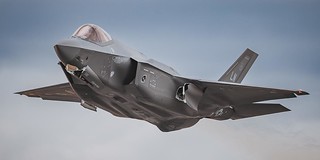What You Can See by Taking a Walk in the Countryside in Hungary: a Fighters Cemetery
Last week, the YouTube channel of Exploring the Unbeaten Path published an interesting video of this group of urban explorers doing a country tour of Hungary.
Specifically, the ride was taking place in a field near the Pápa Air Base in northwestern Hungary. 600 meters east of the southern end of the runway of that base, you can find this:
What you see are 5 Sukhoi Su-22M3K "Fitter" fighters and 29 Mikoyan-Gurevich MiG-21 "Fishbed" fighters, all Soviet-era aircraft that belonged to the Hungarian Air Force (they carry the emblem used by this one from of 1991). Among the MiG-21 there is at least one two-seater device, which was used as a training aircraft:
During the communist dictatorship, the Air Force of the Hungarian People's Army received up to 261 MiG-21 of different variants. The first plane arrived in 1961. Its operational history was disastrous: 74 aircraft were lost in accidents, 32 pilots died. In the 1990s the last Hungarian MiG-21s were removed from service. The oldest models (MiG-21bis single-seater and MiG-UM two-seater) were deposited in Pápa in the open on August 24, 2000. They are the MiG-21 that we see in the video.
As for the Su-22, Hungary acquired 15 aircraft of this type. The first to arrive in the country in 1983 were of the variant Su-22M3K, to be used as support aircraft for ground operations. Although his history of operations in Hungary was not as dramatic as that of MiG-21, there were three accidents with Su-22. The last one occurred when a two-seater MiG-23UB collided with a Su-22M3 single-seater. The pilot of the Su-22M3 managed to eject himself from the plane, which fell to the ground in Kapoly. The MiG-23UB lost the vertical stabilizer during the collision. The crew tried to reach the Pápa Air Base, but the plane fell to the ground near it, the two pilots died. The Su-22 was removed from service in 1997.
The Pápa Air Base was created in the 1930s. The Soviets settled there in April 1945. In 1961 the 47th Fighter Regiment, equipped with 80 MiG-21F-13 fighters, was transferred to this base. In 1964 the unit began its conversion to the MiG-21PF model, and in 1971 they made the transition to the MiG-21MF. In 1979 the Regiment began the introduction of the MiG-23MF. In 1984 a remodeling of the track began, so the fighters of this base were temporarily relocated in Mezokovesd and Sibirskii. After the arrival of democracy, in 1992 the 47th Pápa Regiment became the 47th Pápa Tactical Regiment. The MiG21MF, MiG-23MF and Su-22 that remained in Pápa were removed from service in 1997, many of them being stored in hangars at the base. The 47th Regiment was disbanded on June 30, 2001. That same year Pápa became a reserve base of NATO (Hungary had joined the Atlantic Alliance on March 12, 1999). On July 14, 2009, the first of its new guests arrived in Pápa: the three Boeing C-17 Globemaster III transport aircraft of the Strategic Airlift Capability (SAC), an international military consortium made up of several NATO countries, in addition to Finland and Sweden. These aircraft show off the emblem of the Hungarian Air Force.
|
Don't miss the news and content that interest you. Receive the free daily newsletter in your email: |
- Most read
- The brutal 'touch and go' of a Lufthansa Boeing 747 at Los Angeles Airport
- Portugal confirms that it has begun its transition to the F-35 and indicates bad news for Spain
- A Corporal of the Regular Forces of the Spanish Army dies in an exercise in Poland
- Eurofighter vs F-35: the opinions of professional pilots on these advanced fighters
- The ruins of the old Yugoslav radar station at Gola Plješevica, Croatia
- The firearms used by the Pontifical Swiss Guard, the smallest army in the world
- The deployment of Spanish soldiers of the Regulars and BRILAT near Russian territory

 ES
ES







Opina sobre esta entrada: